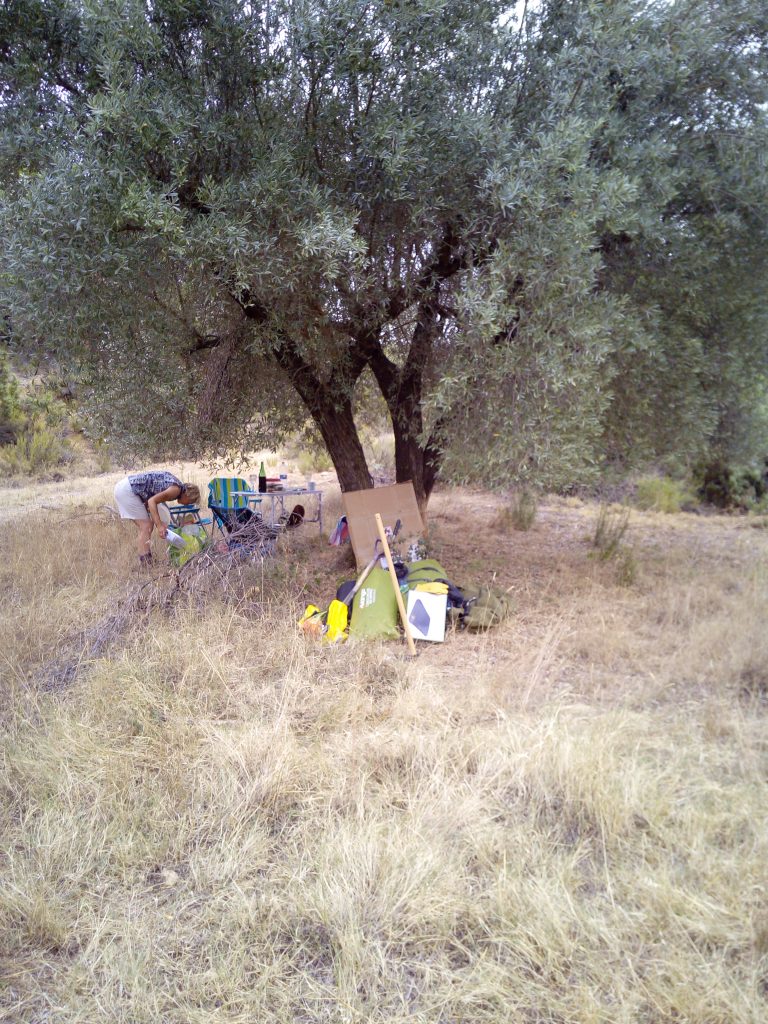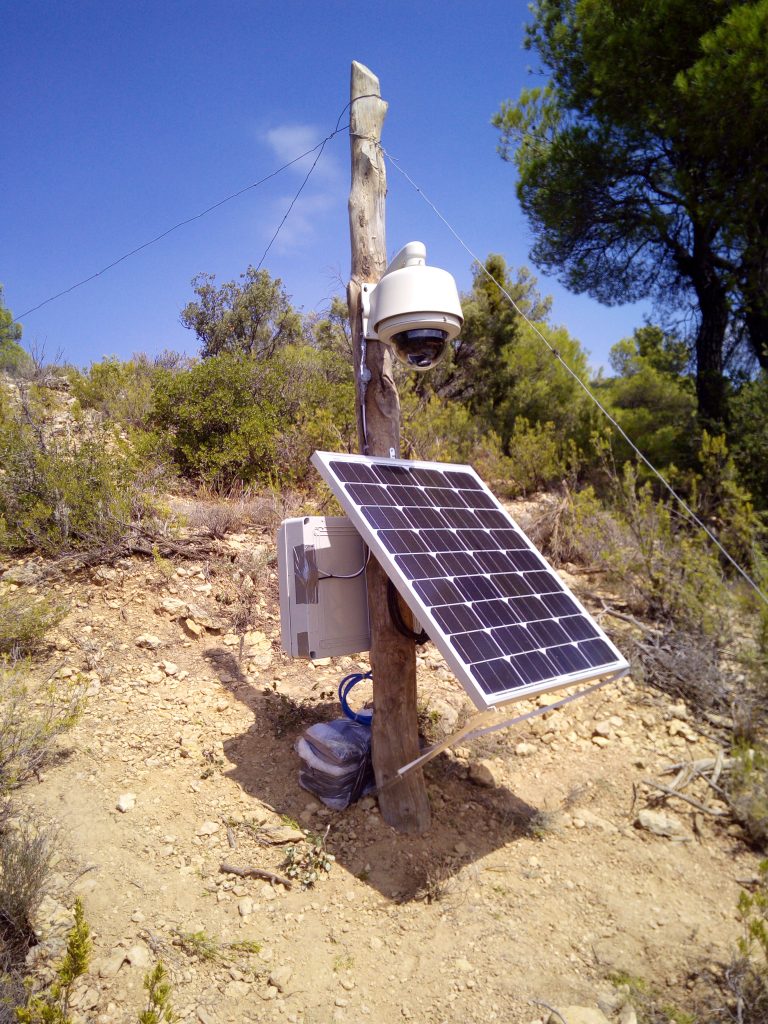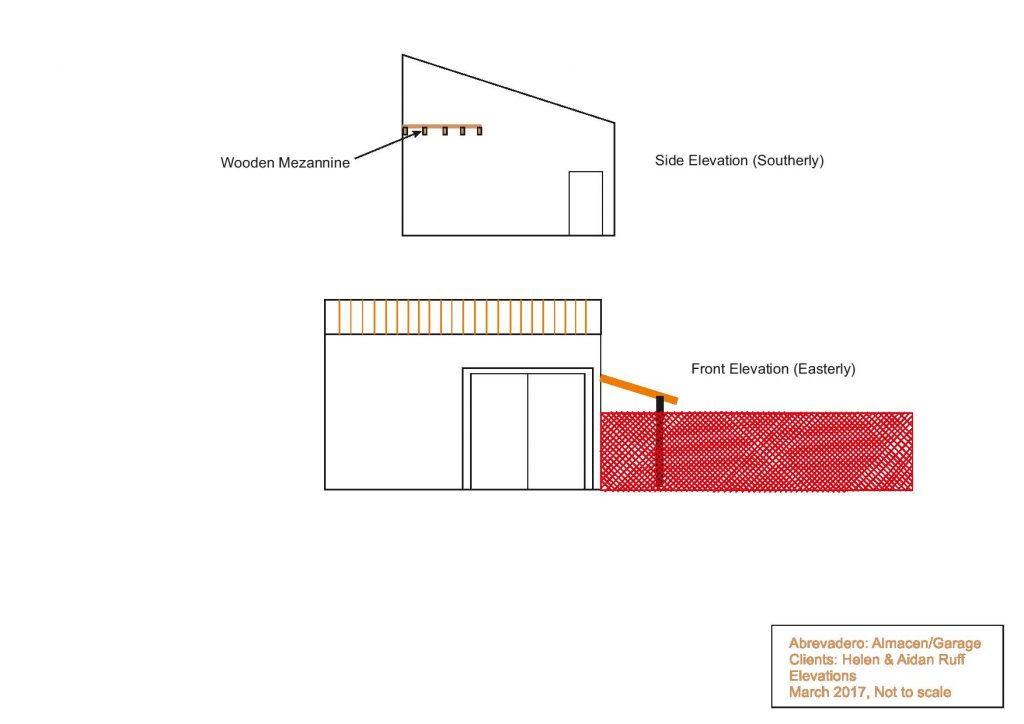This is just a test
Our Solar Powered Dream
Category: Uncategorized
Just a quick note to blog followers…
I’ve entered my tracking solar system project into the 2018 Hackaday Energy Harvesting Challenge. If you want to see the culmination of a lot of the stuff I’ve been doing, have a look here
https://hackaday.io/project/158994-solar-tracker-self-powered-and-auto-aligning
If you like it, I think that you can vote for the project and, maybe, just maybe, I’ll win…yippee!!

Rain, rain, please don’t go to Spain..too late!
In late August/early September, we went to Matarranya by car so that I could take some equipment to set up a webcam to watch the building work on our house as well as keeping an eye on the local wildlife. We thought that it would be a great laugh to buy a tent and actually sleep on our land for the first time. Everything was very dry, it being full summer and we anticipated no problems.
An easy decision was made to stop over in the lovely town of Logroño in north western Spain because it wasn’t far off our route. Primarily, this was because we had watched Alex Polizzis TV series on Spain and the tapas in Logroño looked fabulous. Well, it didn’t disappoint. There are hundreds of tapas bars, small and large, with thousands of people wandering the baking streets and sampling the delights. As the sweltering day meandered into the cooler, more bearable evening the tapas came on display and the street feasting began.
Like vast herds of wildebeest, the local Spaniards graze their way from watering hole to feeding grounds and we followed like an Attenborough camera team. As the evening progressed, more and more we saw La Trompa, the local name for the drunken walk during a well refreshed night out by the local wildlife. I think it describes the trumpeting sound made by an elephant so if you imagine the way in which elephants walk, swaying from side to side, you get the idea.
Sadly, we’d only planned one night stop in tapas heaven and only a few hours drive saw us pulling into our local town of Valderrobres. We had booked an apartment for the week, the whole camping thing being just a bit of fun. With temperatures hovering around 42 degrees, I was ready with portable fans to stop us turning into small, sweaty puddles in our flimsy tent. The countryside was dry aftera couple of months of little or no rain and baking sun. Our olive trees, whilst laden with fruit, were looking rather sad. The olives had a shrunken, shrivelled look and were clearly in need of a serious drink. I did despair slightly that the crop might be ruined due to the lack of rain.

Setting Up Camp
Of course, I needn’t have worried as, being a rain god, those heavenly droplets can’t resist falling on me and about an hour after setting up camp, the heavens opened and a huge storm hit. What is it about tents, Brits and rain? It must be in our DNA, I guess.
It rained heavily overnight for about 12 hours, the water got in everywhere and we were soaked throughout the night…at one point, I seriously began to wonder if the tent was going to be lifted up with us inside and blown over the cliffs; an ignominious end to our Spanish Dream in a broken heap at the bottom of the valley.
Of course, with the storm also came hailstones and plummeting temperatures. We had only taken thin sheets, anticipating baking not freezing and spent the night huddled together, extracting heat from each other like a pair of thermal vampires. As the first light broke, I was fully awake to see that the clouds had more or less cleared and I was greeted with a glorious dawn breaking and the welcome return of the sun as it streaked across the mountains. It’s welcome warmth encouraged me to venture out to forage (in the back of the car) for coffee-making and breakfast materials.
We’d had a visitor during the night, a fox by the looks and smell of it. There wasn’t too much damage, but the remains of last nights supper was nibbled and spread around the campsite, although that could have been helped by the wind during the night. Next time, I’m setting up the game camera! We’ve already taken some pictures of a large-eared fox at the watering hole, so maybe it was our nocturnal visitor.

Watering Hole By Day

Watering Hole By Night Complete with Foxy Eyes

Camera With Solar Panel
I bought a fabulous camera from Ebay with full control of pan/tilt and 18:1 optical zoom in a weather proof enclosure. Of course, as we have no power systems installed yet, clearly the only option was to build a standalone solar battery system.
The picture shows how I mounted it all. Basically, I found an old beam from the demolition of the house and dug it into the ground. Unfortunately, I could only dig down about half a meter until I hit rock and, lacking any large drilling tools, I couldn’t go any further. However, I found some old wire fencing which had been part of a sheep enclosure and stripped it down so that I ended up with a length of galvanised wire.
Three of the heavy tent pegs were rapidly repurposed to hold the stays in place and the control box was mounted at the base of the post as you can see in the photo. The box contains the solar battery charger and a mains inverter to convert the 12V from the battery to 240V to power the camera which is, oddly, powered by AC instead of the more usual 12V or 5V DC.
The battery is visible at the back of the post, on the ground, wrapped in bubble wrap to protect it from the cold during the winter. Lead acid batteries aren’t too fond of freezing temperatures, so a bit of insulation goes a long way.
The camera is sitting on top of a rocky knoll which overlooks the small plateau where the house is situated and looks across the valleys and hills towards Peñarroya de Tastevins which will be the source of our wimax internet access.

Solar Charge Monitor
These photos show the control box with a close up of the little charge monitor that I decided to incorporate just to check that everything is working well. It shows the battery voltage, the charging current, the instantaneous charging power and the total amount of power generated by the solar panels.

The Control Box
Sadly, it being August, we couldn’t get anyone out to install the internet system so the exciting bit is yet to come. I’m heading back down to Spain next week to meet up with Jordi who is going to install our wimax dish which will give us a 15 Mb/s data rate, which is way faster than our UK home system.
UPDATE
I’ve just come back from Mattaranya and have had the WiMax intenet access system installed.
The picture here shows the active antenna which is now mounted on the post above the camera. It points towards Fuentspalda which is where the internet access mast is

Wimax Antenna
positioned. In fact, I could pick up the access point wifi signals on my Android tablet, it’s so strong! unfortunately, I discovered that the combined power consumption of the camera, wimax antenna and the router is a bit much for the leisure battery to last overnight – probably due to couple of cloudy days and the cold nights now, which force the camera heater to engage. So, for the moment I’ve had to install a timer to turn everything off at night.
My new project is to design a circuit to monitor the charging power and the battery voltage and to turn the camera system off when the battery voltage reaches a preprogrammed level to preserve the rest of the system. As a bonus, I’m going to connect this unit via the internet with my Raspberry Pie in the UK so that I can monitor the power generated by the solar panel and the amount consumed by the electronics.
This will be interesting in itself as it’ll give me an idea of how much power I can expect to be generated by the larger solar system throughout the year, when it’s installed. As a final extra, I realised that whilst there isn’t much wind in the summer, there can be a decent amount in the autumn and winter. So, I’m now investigating putting a small wind generator on the camera pole as well. I’ll monitor this along with the solar panel and the next year will tell me if it’s worth installing, say, a 1 kilowatt wind generator as an adjunct to the solar panels so that we never have to rely on a generator.
I’ll do a separate update on this as the experiment progresses.
I’ve had a number of requests from people wanting to use the MPPSolar PIP4048 solar charger/mains inverter. So, I’m going to start a resource here. I’ll add in bits of Arduino code and any data sheets as I go along, together with any useful information that I come across.
The serial protocol is here_;
HS_MS_MSX_RS232_Protocol_20140822_after_current_upgrade
Here is some of the Arduino code to drive the PIP4048:-
Please note that the code is simply extracts from my project. I’t won’t just run! I’ve left in the bits where I send data to an MQTT server running on a RaspberryPi, justto show you how to use the data that comes back. The Command QPIGS to the PIP4048 reads a packet of data containing things like solar input voltage, current load power, etc. The other command that I’m using is QPIWS which reads and decodes various status bits from the PIP4048 – things like has the mains/generator power dropped out. All of the bits are stored in the array pipstatus[] and decoded.
I’ve also uploaded a full version of the code here ppip4048monitor
Please note that this uses an ATMEGA1284 processor to take advantage of the two serial ports as I’ve hooked a GPS receiever up to read the time from the GPS Satellite system. If you use an Arduino Uno with an Ethernet shield (W5200 or compatible), then just delete the GPS code and use the commented out ethernet time library…you’ll also need to change the references to Serial1.write to Serial.write throughout the code.
We decided that the first stage in developing and building the house would be to get all of the services in place. This means that we need to build the solar farm, bring the water from about a mile and a half away and build a workshop/garage (almacen in Spanish).

The Almacen
If you have looked at my omegaman.net blog, you’ll know that I am a confirmed tinkerer and, as such, I just need a workshop. So, the plan this summer is to install the solar system, bring in the water, dig in a septic tank and build an alamcen. So, power and water in, poo and wee out!
The Great Plan indicates that we’ll be going down this summer to start laying out the foundations of the main house and to get to know the land a bit better. So, we could simply stay in a hotel or even rent a house, but where’s the fun in that? The answer is staring us in the face, we’ll make the almacen habitable. Seemples?
You can see on the plan that there’s a shower and a loo in the corner of the almacen. Next to it is a tap which will probably end up being a simple kitchen sink with a table next to it to take a small 2-ring, electric cooker and a benchtop oven/microwave. Add in a barbeque and that’s pretty much all you need for a few weeks of summer living in the sun. Oh, and wine of course.
Well, somewhere to sleep would also be nice. So, up in the roof of the alamcen will be a wooden mezzanine floor where we can put a bed.
 Of course, even in the mountains of Aragon (doesn’t that sound very Lord-Of-The-Rings-ish?) it gets a tad hot in the height of the summer, so I’ve found a great reversible aircon unit surplus on Ebay. It’s a variation on the type you used to see in the USA and the Far East, where it’s jammed into an open window and just plugged into a power socket.
Of course, even in the mountains of Aragon (doesn’t that sound very Lord-Of-The-Rings-ish?) it gets a tad hot in the height of the summer, so I’ve found a great reversible aircon unit surplus on Ebay. It’s a variation on the type you used to see in the USA and the Far East, where it’s jammed into an open window and just plugged into a power socket.
It’s quite a meaty unit, intended for larger rooms and will also heat as well as cool, so when we’re there in the winter and I feel the need to build something, I’ll be able to heat the alamcen as well as cool it in the summer.

The power consumption is about 900W for 3.2KW of heating or cooling, so the solar and battery system should have no problems running it 24/7.
Our architect, Manel, is taking our ideas and translating them into something acceptable to the local council, or ayuntamento. The aparejador is doing the structural calculations at the moment so that we can do the submission. From what I gather, “aparejador” means “rigger”. However, in the building context, I think that it means “structural engineer”. When we build in the UK, we also need to do the structural calculations to ensure that stuff doesn’t fall down and I guess that, despite some of the popular Holiday-Homes-From-Hell programs on TV, they do the same thing in Spain. Fingers crossed…
One final element is the dog pen. This means that we can take our eight dogs – six chiahuahuas called Bolly (the mum), Gizmo, Juju, Livvy, Casper and last, and very much the least, Coco. Travelling with us will also be our two wolfhounds, Otto and Bertie.
The dog pen will give us a bit of peace of mind when we go out, so that at least we know that the wolfhounds won’t be running off chasing wild ibex over the cliffs and that the little dogs won’t be taken by any of the local raptors. We’re thinking about investing in kevlar jackets for the chiahuahuas.
We’ve rented a house for a week in early May, after our local elections, but before the recently announced General Election in the UK. So, we’re going out to organise the building of the alamcen and catch up with some new friends that we’ve made who are about 9 months ahead of us in the construction process. I’m looking forwards to seeing how they are progressing.
We can’t wait!
© 2025 Off Grid In Spain
Theme by Anders Norén — Up ↑
Recent Comments